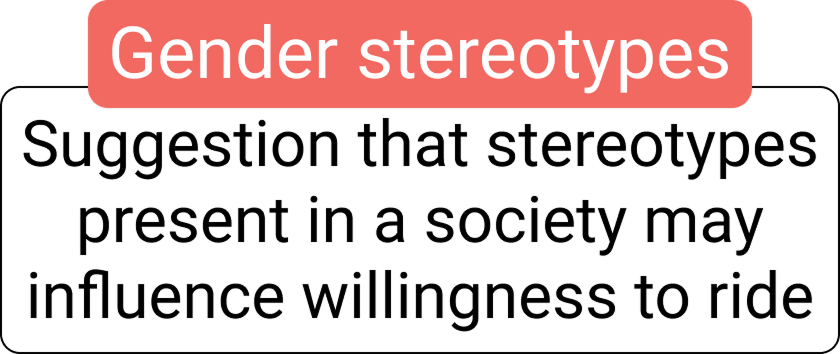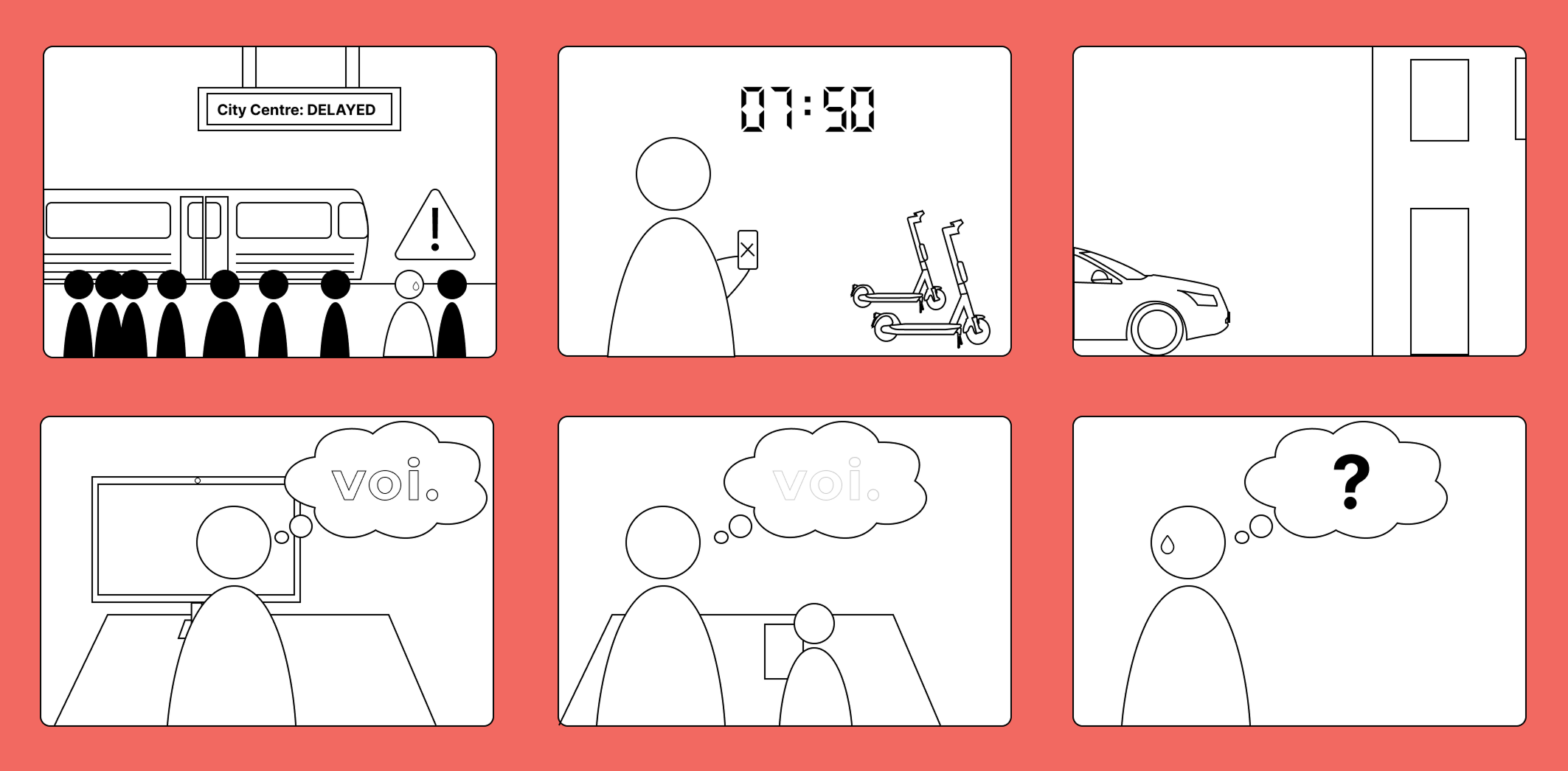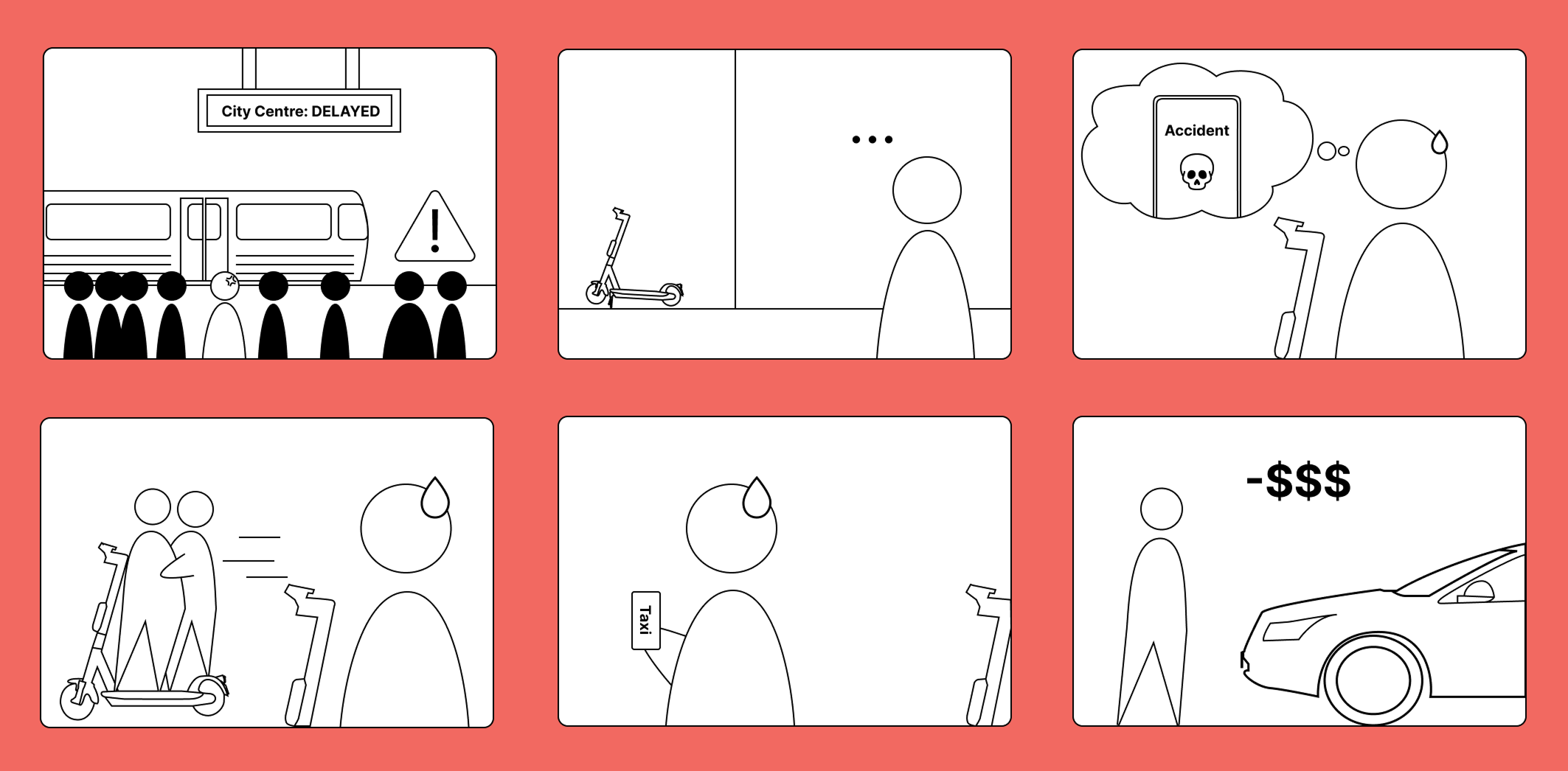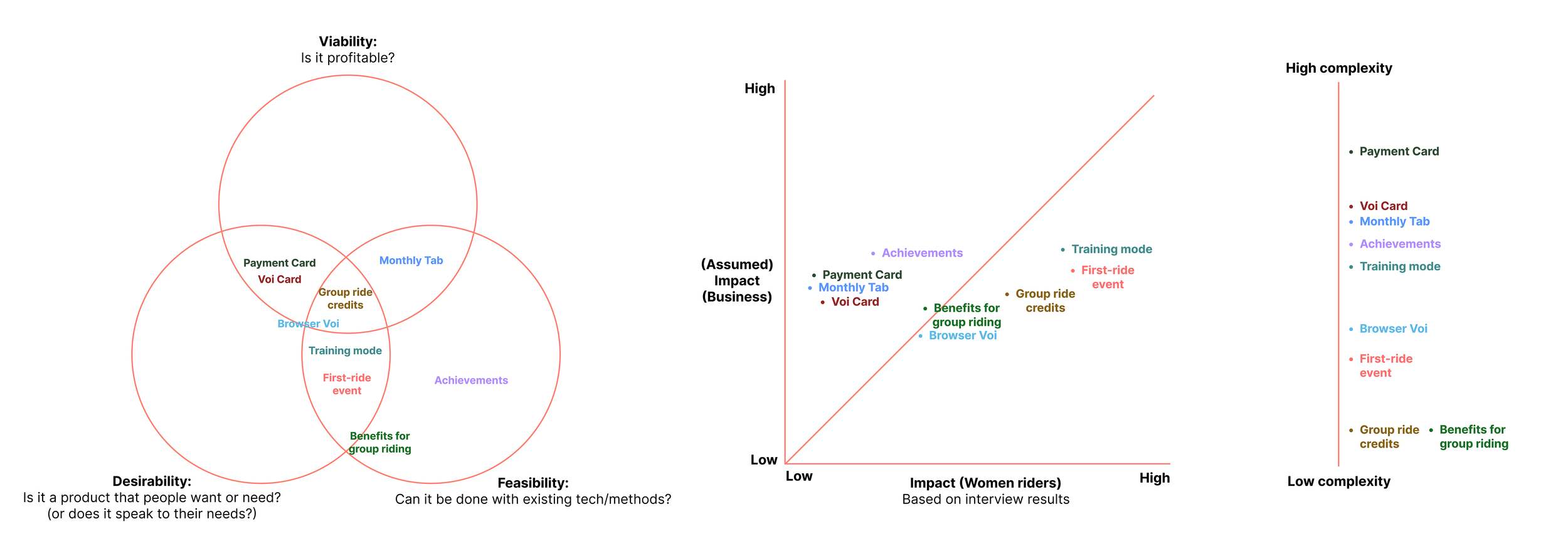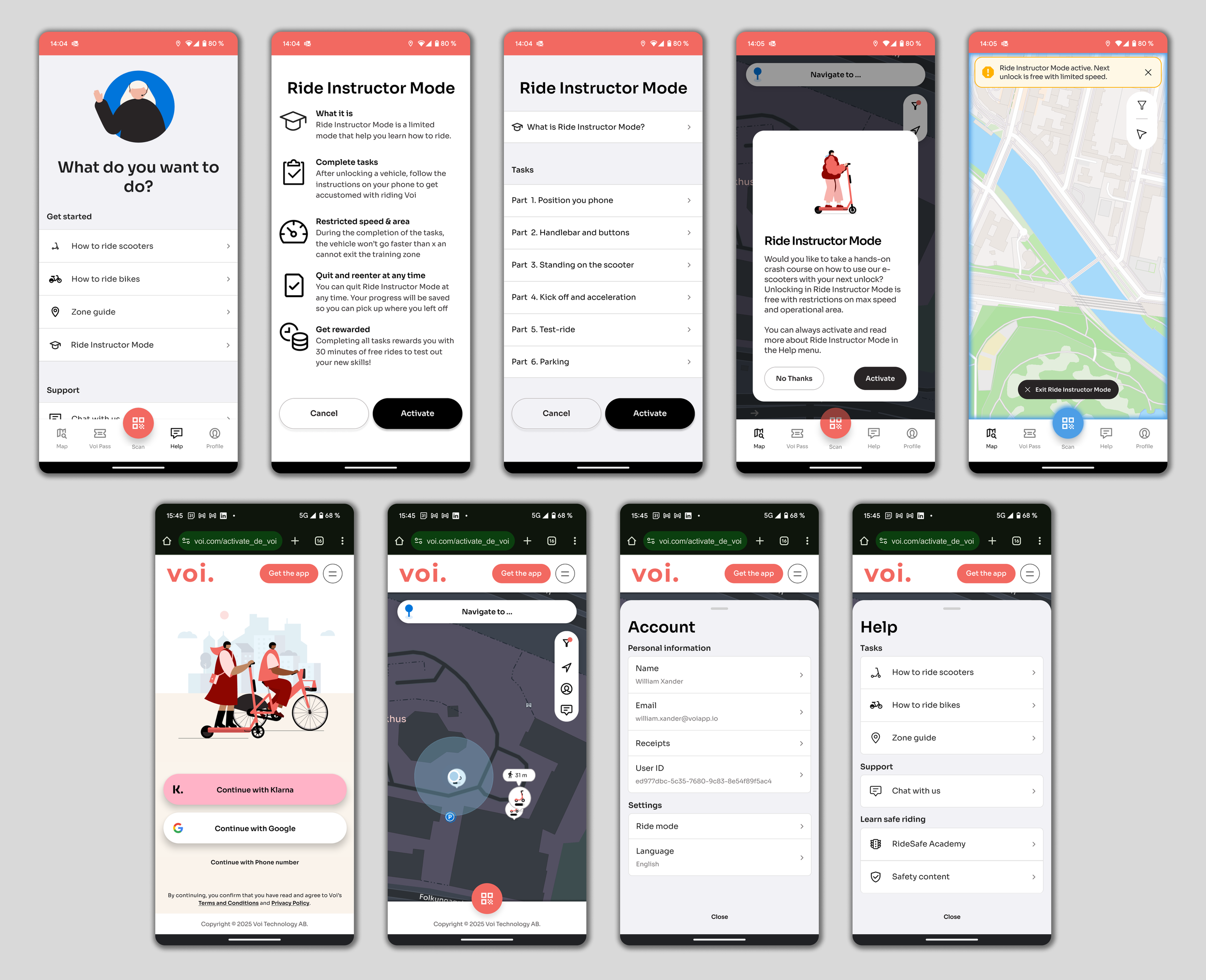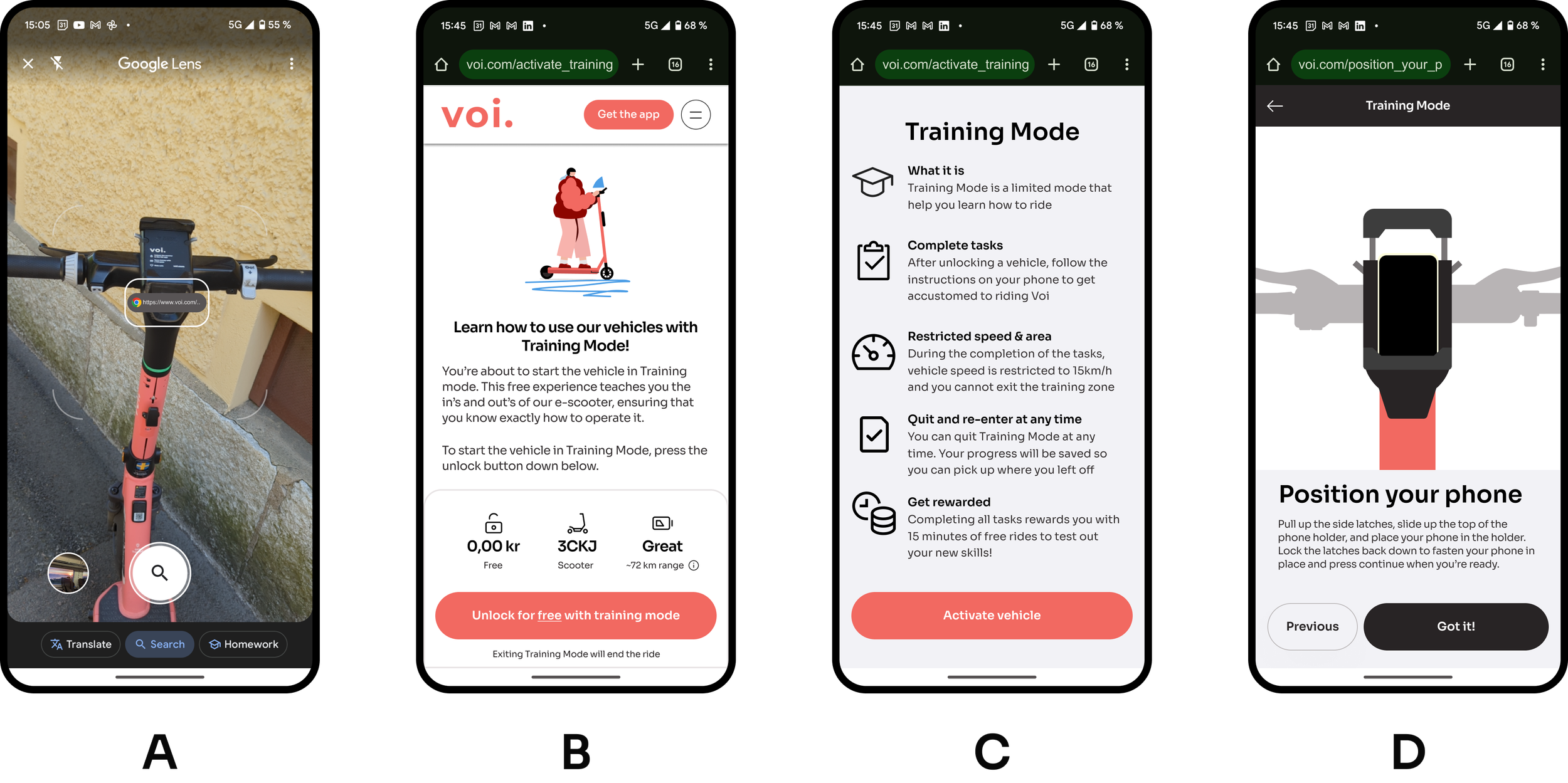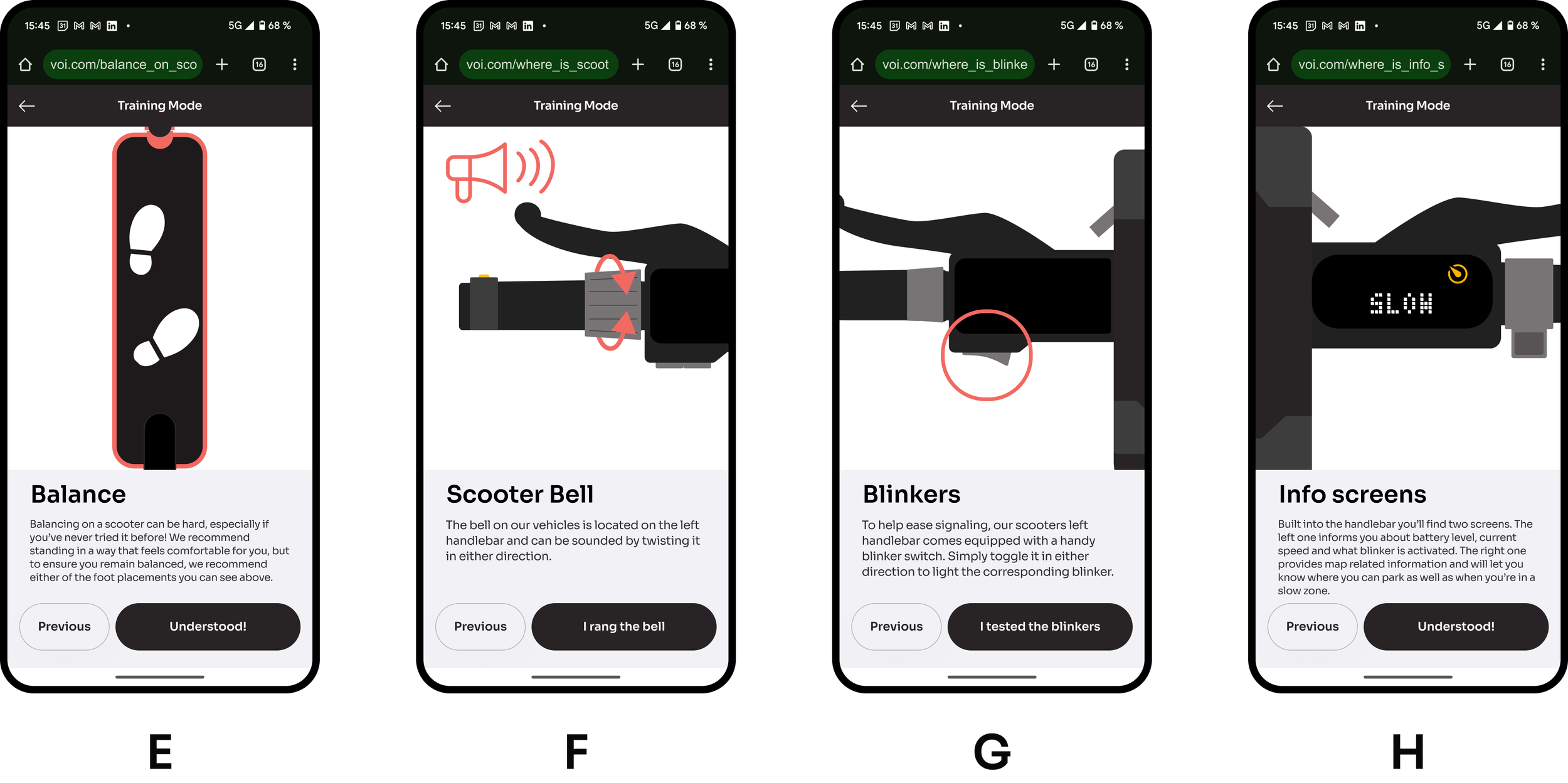Bridging the gender gap in micromobility at Voi
Role: UX researcher & UX designer
Duration: 5 months
Overview
This is my master’s thesis project I conducted with my thesis partner at Chalmers University of Technology, in collaboration with Voi Technology AB. The project is still ongoing, so I present to you its current state, having completed our research and ideation phases.
The topic of this project is the gender gap micromobility, the fact that in any given micromobility market, men greatly outnumber women as riders of e-scooters and e-bikes. Voi was looking for thesis students to investigate and propose solutions to bridge this user gap. As such, we were tasked with conducting both research and subsequently prototyping a solution to present to Voi.
The Problem: Gender gap in micromobility
Background research
We began with a literature review on the gender gap as well as viewing user surveys by other micromobility companies to find out about the state of the gender gap within their user base. Additionally, we also had access to Voi’s database to view patterns in their data. Overall, we encountered a lot of speculation as to why more men ride than women, but no past efforts to bridge this gap. By cross referencing different findings, we noted different factors that are suspected to play a role in lower female ridership, which we focused on to fuel our own investigation. The main factors we found that may influence female ridership were:
User research: Interviews
Taking the factors we discovered as a basis, we outlined several dimensions of micromobility usage and constructed our interview questions. We framed our questions to be in line with our goal of understanding why female non-users choose not to use micromobility services, and what sets them apart from those who do. As such, we administered our interview to a mix of female non-users and users, adding up to a sample of 13 participants from across three different micromobility markets (the United Kingdom, Sweden, and Spain) and an age range of 22–54.
We analyzed our qualitative interview results by way of thematic coding using Condens and affinity mapping in FigJam, through which we identified various problem spaces and pain points. We then mapped these onto a matrix of solvability and the extent to which the solution can employ interaction design methods, as this was a required direction for the thesis project. Through this, we identified two main problem spaces that would be feasible to tackle as part of our master’s thesis.
Ideation
Our interviews resulted in two main problem spaces:
(1) The first ride is scary, unfamiliar, and intimidating
(2) It is bothersome to download and set up the app , create and account, and enter payment information when in a hurry
We created personas and storyboards to identify the specific points at which these problems constituted obstacles to ridership, and then used the Crazy 8 method to ideate within these two problem spaces.
The ideation round resulted in the generation of nine different ideas to tackle the problem spaces outlined above. We brainstormed further to individually develop them while considering their potential value as well as risks and considerations.
We then ranked and charted these ideas on a few different dimensions: a viability*desirability*feasibility diagram, an impact assessment, and a complexity rating. Using these results, we decided on which idea to turn into a testable prototype.
Initial prototypes
As part of our idea exploration, we used screenshots of the app as well as some custom components on Figma to create low-fidelity prototypes for two of our ideas: Ride Instructor Mode (top row) and browser-based Voi (bottom row). This allowed us to discuss and ideate further around something more tangible.
Stakeholder feedback and a focus group
The two low fidelity prototypes were presented to and discussed with Voi, who gave positive feedbacks on the concept of further e-scooter training and being able to access this via a browser. Thus, these two ideas were merged into a browser-based training mode. In order to gain more user-centered feedback on what e-scooter functions require instruction and elaboration, we conducted a focus group study with N = 5 non-users. We assembled around a park e-scooter and asked them to discuss how they would go about riding it, how to interact with the e-scooter, and whether they felt unsafe or insecure after having seen Voi’s current unboarding screens. The main results can be seen in the following image.
Final solution: Training Mode
In this final iteration, Training Mode is a browser-based e-scooter training platform designed to provide more instruction and transparency on e-scooter functions. Users don’t need to install an app, create an account, or input payment information to access Training Mode. It simply requires using one's smartphone camera to scan the existing QR code on the vehicle, which directs them to their browser. Users are given the option to unlock the scanned e-scooter for free in Training Mode, which imposes speed restrictions and limits the e-scooter's operational range to only allow for training. They are shown information concerning what Training Mode is and are then prompted to activate the vehicle. The first step in Training Mode is for the user to place their smartphone in the phone holder, which is shown in a stylized animation of the e-scooter.
The user can thereby view the tutorial information hands-free and can simultaneously interact with the vehicle. Afterwards, users are taken through a step-by-step training flow. These steps involve different screens with animations demonstrating various e-scooter functions. For first-time completion, users are rewarded with Voi credits, to be used for free rides.




